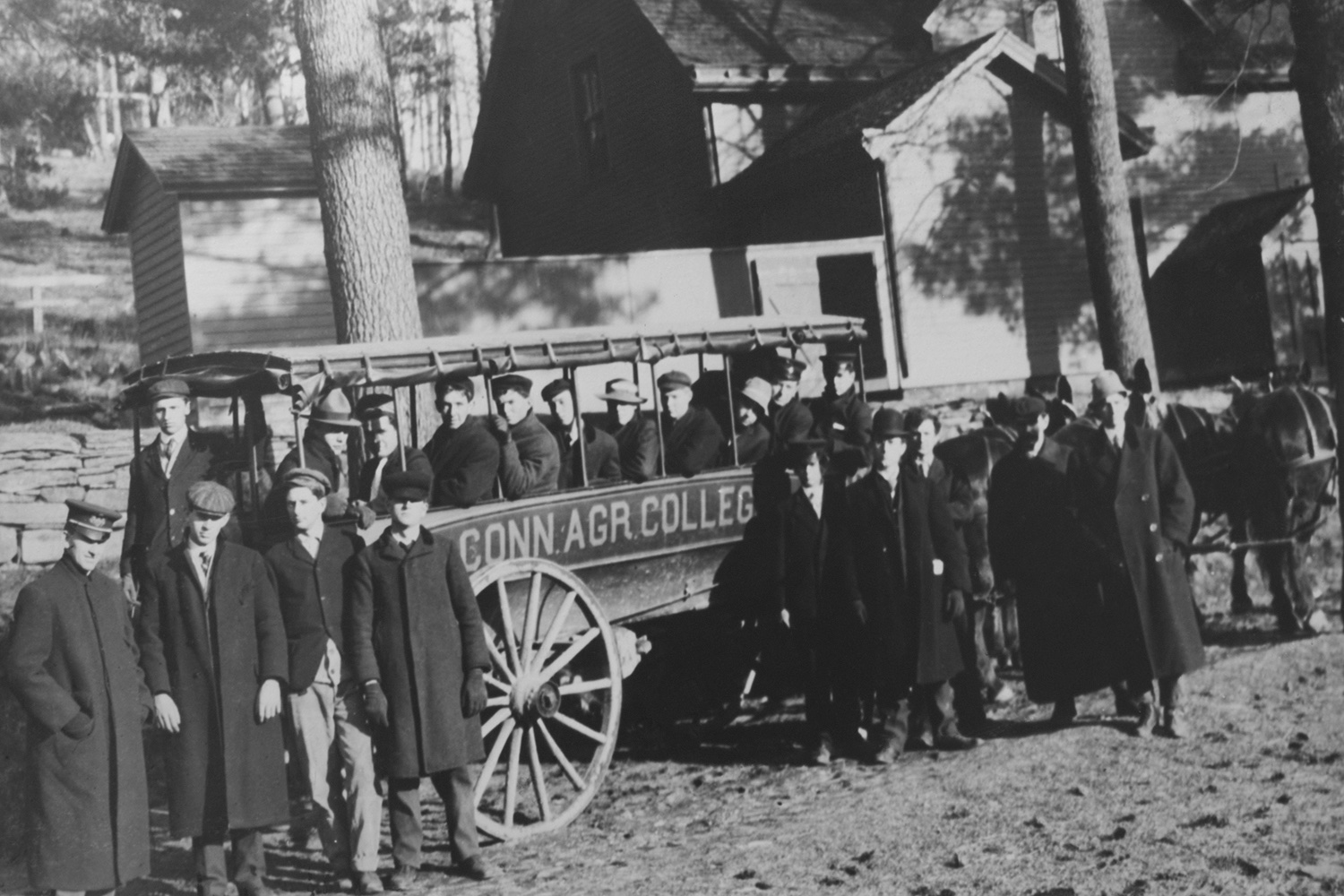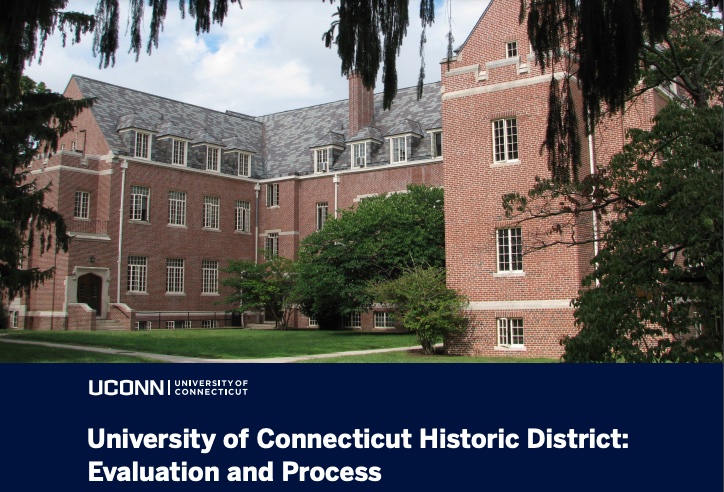The Stone Pavilion Project
Learn More – History – Historical District and Naming

UConn's Historic District
An important document relevant to the stone pavilion is University of Connecticut Historic District: Evaluation and Process (E&P), prepared by the consultants Skidmore, Owings & Merrill, LLP, released October 2016, and revised January 2017. Quoting section 1.1, "The purpose of this supplementary document is to enhance and update the Master Plan University's Campus Master Plan 2015-2035 (May 2015)] with additional guidelines and strategies."

This original 2015-2035 campus master plan omitted the stone pavilion from its texts and maps, most notably in its Appendix E and Appendix C. The E&P document corrects this omission in inventory, but makes no recommendations for planning. The E&P states that the historic central campus, which includes the stone pavilion, was officially designated in 1989 (Registration 88003202) as a historic district on the National Register of Historic Places as administered by the National Park Service. "All National Register of Historic Places properties are also on the Connecticut Register, managed by the State Historic Preservation Office (SHPO)."

The E&P report notes that: "The original designation noted both the historical and architectural significance of the heritage campus: The University of Connecticut at Storrs, the major institution of the state system for higher education, is historically significant as the first state-supported school for the study of agriculture, one of many such populist schools which were established in the United States as a result of the educational reforms of the nineteenth century and the Federal Land Grant Act of 1862 (Criterion A)." From this perspective, the stone pavilion explicitly celebrates the historic linkage between agriculture and education, perhaps more so than any other building. And yet neither the Master Plan nor its later Appendices make any recommendations for its maintenance, management, and improvement. One of the primary goals of the Stone Pavilion Project is to bring this important structure into the next Master Plan.

Official Registration and Naming
On the list of buildings "Contributing to [the historic] District", the stone pavilion is designated #16 under the name "Grange Shelter Pavilion." At ~14 feet across, it's the smallest building on the register, much smaller than the younger planetarium, designated #28. The listing for Building #16 on page 26 of the E&P report is below. All words are quoted except for blanks.
-
Current Name: Grange Shelter Pavilion
-
Historic Name: Grange Shelter Pavilion
-
Date of Construction: 1937
-
Architects: [left blank]
-
Style: N/A
-
Type of Structure: [left blank]
-
Current Use(s): Outdoor Pavilion
-
Original Use(s): Outdoor Pavilion
-
Gross Square Footage: [left blank]
-
Historic Status: UConn Historic District: Contributing (C)
-
Notable Landscapes: [left blank]
-
Notes: [left blank]
From this listing, it is clear that the pavilion was mentioned, named, and mapped and nothing more. For a name, the listing used the final noun (pavilion) following two adjectives (Grange, and then Shelter) in four places: Current Name, Historic name, Current Use, Original Use.
Developing an Educational Resource
Developing the Stone Pavilion into a campus and educational resource is consistent with these specific sections of the E&P:
- Section 3.1.4. Ranking. "Based on the recommended evaluation criteria above, each property can be assigned a priority or rank identifying its level of importance within the University and its potential for preservation or reuse." The pavilion is not included in the ranking.
-
Section 3.2. Existing Buildings and Sites in the University of Connecticut Historic District. This lists on page 60 all buildings within the designated historic district. The pavilion is not under any plan. We suggest this be reversed to be developed into an educational and historic resource.
-
Section 1.1.1. Understanding and Preserving Campus Heritage. "Cultivating campus heritage includes: Highlighting the unique qualities of the district, Maintaining diversity and distinct places...., Prioritizing strategies for improvements...., Building for longevity..., and Defining a process to plan and manage the districts resources and facilitating a culture and responsibility for long-term stewardship." Again, the pavilion is missing, even though it has "unique qualities," and manifests "diversity" of use.
-
Section 1.1.3. Advancing the Academic Vision. "The Academic Vision is the core mission of the university......recognized for....innovative education and engaged collaborations with the state, community and industry partners." Our pavilion project seeks to highlight innovative education using the stone pavilion as a teaching resource, and doing so in collaboration with many entities.
-
Section 1.1.4. Accommodating Other Institutional Goals. "Campus heritage and historic preservation [involves]...Activate indoor and outdoor student spaces, [and] Enhance campus experience." This is a goal of the stone pavilion.
The stone pavilion is more than a campus building. It's a building rooted into the local landscape within a stone's throw of the original agricultural school. "Although the central area of campus is designated as a Historic District through the National Register of Historic Places, none of the individual buildings within the district are individually recognized as landmarks. When coupled with landscapes, however, they form a unique place with a notable and memorable heritage. The two are intertwined and must be understood as such when evaluating campus heritage." Of all the buildings, the stone pavilion is unarguably the most unique, being small, hexagonal, open-air, and with an exhibit wall. It is also the one most linked to the landscape, being built on bedrock and surrounded by large glacial erratic stones.